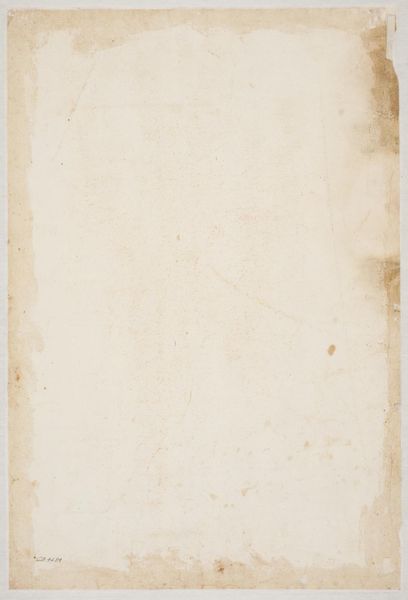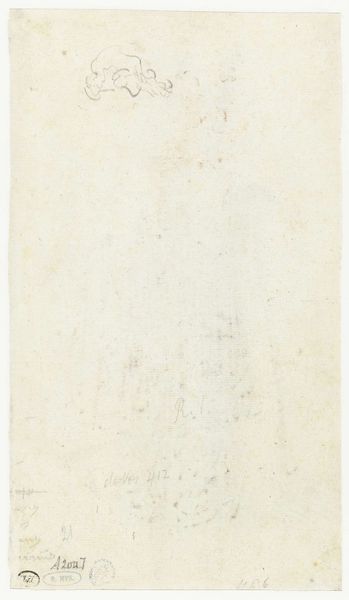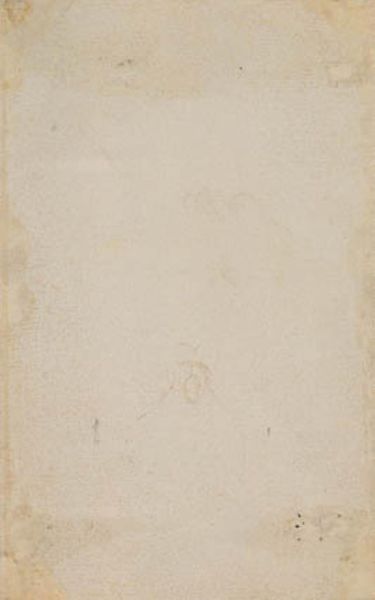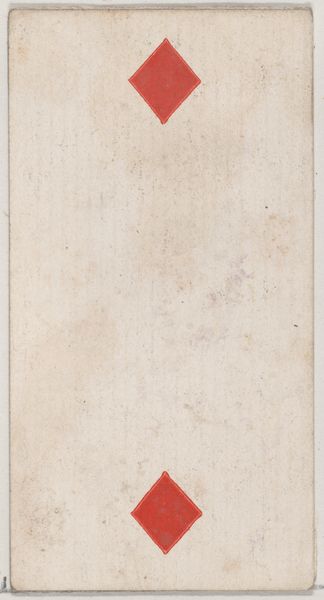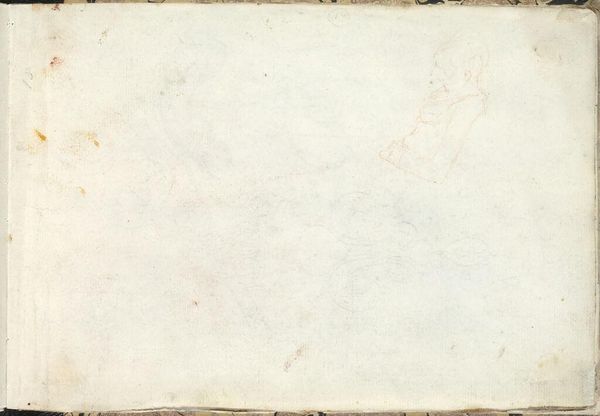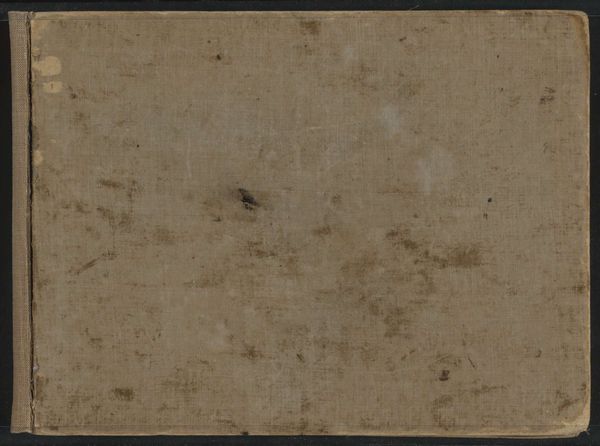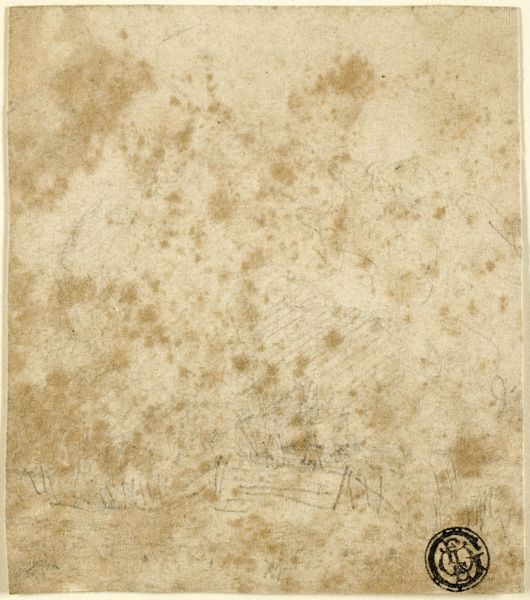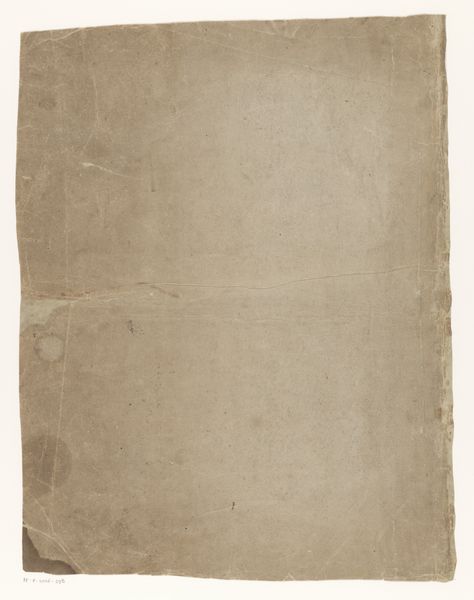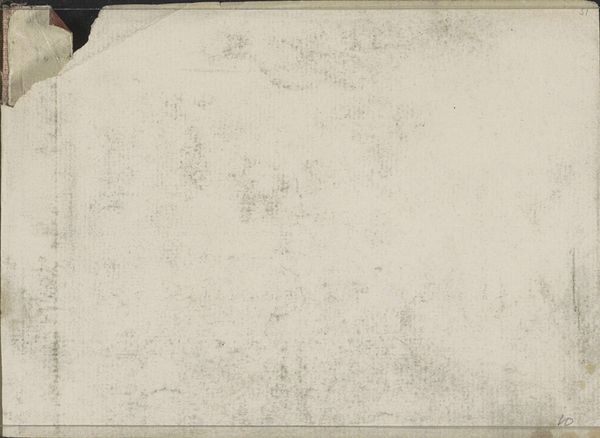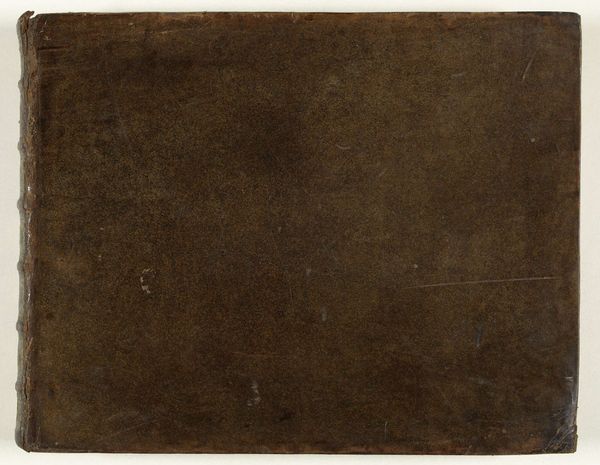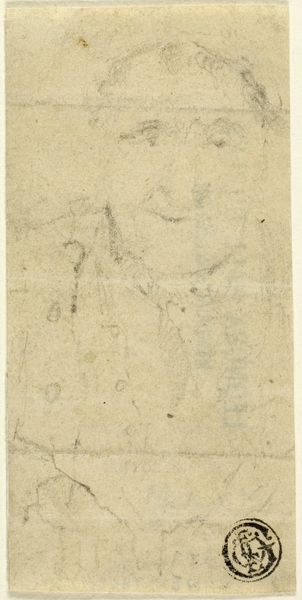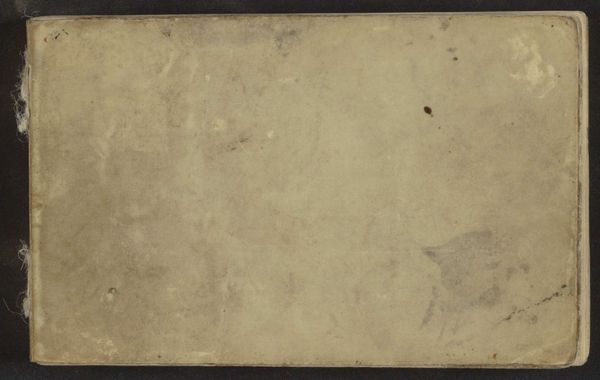
drawing, ink, pen
#
drawing
#
dutch-golden-age
#
landscape
#
figuration
#
ink
#
pen work
#
pen
Dimensions: height 84 mm, width 148 mm
Copyright: Rijks Museum: Open Domain
Curator: This drawing, housed here at the Rijksmuseum, is catalogued as "Sketch of a Part of a Mast," and it’s attributed to Willem van de Velde the Elder, dating possibly from 1666. It’s executed in pen and ink. What are your initial impressions? Editor: Bleak, to be honest. There’s this fragment of something technical – rigging, I suppose, or a mast. But all I feel is the vast emptiness surrounding it. A symbol adrift. It’s melancholy, wouldn't you say? Curator: Maritime imagery of this era often carries coded meanings related to Dutch naval power, trade, and exploration. Van de Velde was known for his precise ship portraits, serving almost as a maritime war artist. The mast section, though fragmented, can be seen as a symbolic assertion of dominance. Editor: But is it though? Maybe that's true in general for his work, but this feels different, precisely *because* it’s incomplete. Like a fallen giant. Power diminished, ambitions thwarted. I look at that lonely fragment and can’t help but see transience. Even empires crumble. The pen work has that almost fragile feeling, a feeling like it's one wrong move and it'll tear. Curator: An intriguing point. However, in art of this period, we find masts, rigging and sails carrying significant weight as a demonstration of Dutch ingenuity and engineering. Even a fragment could be viewed as an intentional shorthand—a symbol that would resonate deeply with contemporary viewers already immersed in this visual language. What do you read into the presence of that writing in the corner? Editor: Another enigma! Is it the artist's own notation, almost as a reminder to himself? Does it mean to give the piece authenticity, as a record that a specific individual, and the Dutch nation as a whole, can call home? And is there possibly even something to the idea of calling home from the water, since The Dutch were quite prominent seafarers? It gives context, sure, but amplifies the piece’s inherent mystery, its fragmentary nature, its silence. It almost feels more conceptual than technical to me. Curator: You highlight a perspective I confess I hadn’t fully considered, the psychological dimension embedded within what appears, at first glance, a study in maritime craftsmanship. Thank you for bringing that to the foreground! Editor: Well, these old drawings, sometimes, have new meanings for those of us in modern times. Thanks for shedding some light on them for us!
Comments
No comments
Be the first to comment and join the conversation on the ultimate creative platform.
